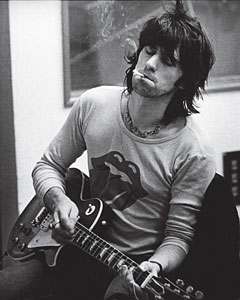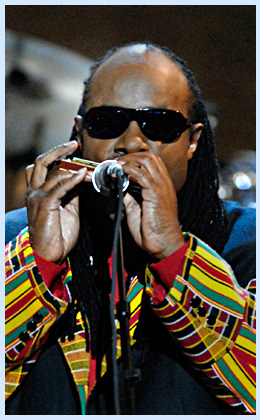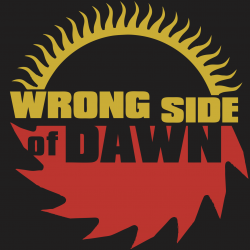In the coming weeks, Nelson and I have decided we’ll relate some of the stories behind how our songs were written and recorded. They might not be as exciting as, like, a story about how we thwarted a bank robbery or something (I’ll tell you if we do), but the hope is that if you know a little something about the songs, maybe you’ll get more attached to them. Actually, forget what I just said. It’s too early to reveal our master plan.
Starting from the beginning of the album, we’ll skip over the 47-second “Flight I” (perhaps including it in a combined post with “Flight III” later) and start from track 2, “Running Scared.”
Running Scared
Very rarely have I ever sat down and said “I am going to write a song now.” Most songs I write begin with some sort of lucky accident; I’m more likely to begin a song by fumbling around with some chords that I played by accident than I am to begin writing with any sort of conscious attempt. (Specifically, the guitars to “Out of Time” and “Where Is Bobby McGee” were born out of a misplaced finger that occurred while attempting to play something else.) When I take the latter approach, it usually winds up being a waste of time, and I spend many hours working on something that will get thrown out by reason of sucking real bad.
That’s why “Running Scared” (track 2 on our album) sticks out for me among our songs. When I started writing it, I sat down with a specific goal in mind. Naturally, the song was a total FAIL in actually accomplishing that goal. This is about as close as I come to consciously choosing the direction of my songwriting.
“Running Scared” was supposed to cure a recent spat of amateur attempts at weird chord voicings and other experiments that sounded like shit. The basic idea behind the new song was this: Stop trying to find sounds that are weird or unique. If no one’s ever done anything like it before, that’s probably because it sucks. (Actually, I’d still argue that the main riff to “The Grinder’s Tale” is unique, but I’ve already spent too much time on that story.) Instead, create something straightforward and old-fashioned, and use your instincts to make it catchy. Go for something simple, something “Stones-y,” something short and powerful that will leave an immediate impression. Oh, and it should be nice and easy to play, like a Stones song.

In the interest of being Stones-y and rootsy, I started with something resembling a boogie pattern on an A. Nothing more basic rock-n-roll than that. From there, I played some other barre chords, throwing my fingers on to all the most practical embellishments I knew, until I had the basic form of the chorus: A-D-C-G-A-D-C-F.
By the next day, I was back to being dumb and trying to do things the hard way: “Hey, I’ve never written anything starting with the bass before. Let’s do that today!” I took up my bass and bounced through an overactive, unseemly, ostentatiously funky bass line. “This will be the verse to my rootsy song!” said I, rather arbitrarily and stupidly.
But first, I needed a guitar part to play over my hyperactive bass line. Following along the chord progression that my bass line only obliquely suggested, I wrote a guitar riff that was as fast, active, and funky as the bass. Rookie mistake. If I had really wanted to go all the way with this bass line, the smarter decision might have been to simplify the guitar as much as possible. The bass line was so overactive, I had simply run out of room for more interesting instrumental parts. Try as I might to cram by the guitar and bass together on a demo, it all sounded like unconnected mush.
Something had to go. It was the bass. The guitar part that I’d written to “support” the bass stayed, and it became the basis of the verses. I’ve since forgotten the bass line. Go figure.
There was still one more problem to get around in order to awkwardly paste my chorus and verse together. While the chorus had been written in A, the verse was written in G. To accomplish the modulation up to A, I hammered out a simple pre-chorus. Of course, it wasn’t until long after the song had been recorded that I realized, “Gee, I don’t use any open strings in the verse. I could have played the verse in the same key as the chorus by just moving my fingers up 2 frets during the verse.” Way to write a whole section that you didn’t have to, genius.
When I finally went to record what I’d written, I used Nelson’s digital 8-track recorder, and backed it with one of the built-in electronic drum beats. What do you know, the pre-programmed beat just happened to stop at a transition point in the intro, and then restart in the middle of the first verse. This quirk was carried over even when we started recording real drums. Where is that demo, anyway? Oh, here it is. Speaking of unintentional drum parts, you’ll notice that, on the final “Stay Awake” version, Anthony keeps the song interesting by handling each verse and pre-chorus a little differently than the one before. I haven’t asked him about this, but I’m convinced that’s because he was just making all that shit up as he went along. Before going into the studio, he knew the exact beat that he wanted to play under the guitar solo at the very end. (Listen to the drums there starting around 3:49; they’re pretty cool). The song up until then? I’m not so sure. But hey, if you’re good enough to get away with stuff like that…
And then there’s the lyrics. I must have written at least a dozen drafts of lyrics for this one. No, not drafts for “Running Scared,” mind you, but drafts for a whole bunch of other songs with names like “Duck Tape,” “I Can’t Take It,” “She’s Got It,” and God only remembers what else. Nothing really worked.
And there was that day when I decided, “You know what, we don’t do enough backup vocals. In one of our songs, we should shout something catchy and moronic like ‘hey hey hey.’ How about this song?” And so “Running Scared” had it’s first official lyric. The word “hey.”
Finally, I was driving home one day (from Target, how the hell do I remember that?), listening to my instrumental demo, and started improvising some vocals along with the music.
I think the basic idea was about a fear of… what ? Commitment? Success? Of growing up? Maybe a realization that actually reaching one’s potential eliminates the excitement of the potential itself, thus creating an incentive to run away from success? Is that making sense to anybody? Doesn’t really matter. Because either way, the lyrics to “Running Scared” still don’t make any sense to me, and I wrote them. They were written so quickly and in such a freewheeling fashion, I’m pretty sure there’s still a couple lines in there that don’t have any relation to anything.
So I wrote the current “Running Scared” lyrics and showed them to Nelson. And I promptly threw them out on the basis of… they sucked.
Then I wrote some other lyrics on another concept which sucked, and showed them to Nelson. Nelson’s response? “Um, I’m pretty sure you were done with this song last time.”
On and on I battled, insistent that I could do better. But Nelson was right. The song was done. And once a song is done, what else can you really do? Bloodied and exhausted, I came crawling back to the lyrics now known as “Running Scared.”

How should I describe our approach to actually recording the vocals? As a kid, I think I remember seeing a movie on TV in which a guy accidentally pees on his pants a little while going to the bathroom. In order to hide it, he covers all of his clothes in water, so that the wet spot on his pants doesn’t stand out. I think that pretty much sums up the recording of “Running Scared.” In order to cover up the slight sloppiness and looseness with which the song was written, the only solution was to turn the recording into total chaos. Nelson shouts out random lyrics behind the third verse and behind my final guitar solo. The crash ending has a couple gratuitous “heys” after the song is over. In the middle of my first guitar solo, I beg for extra time to continue soloing: “Wait, I got one more.”
This last one caused my high school music teacher, Jamie Egan, to laugh uncontrollably when I showed it to him. I think that was the desired effect. In all honesty though, I stole that one from Stevie Wonder’s interjection of “Can I play!?” in the middle of his “Boogie On Reggae Woman” harmonica solo. It also seems like the sort of thing Buddy Guy or other performers might say in the middle of a solo.
And that’s “Running Scared.” How did we get here? What happened to my easy, simple, Stones song, and why did it turn into the finger-tangling, vocal chord-tearing, most technically challenging guitar song on the whole album? The idea of this song was never to make things harder for me. Things were supposed to get simpler. But why don’t you try playing the verse guitar riff and singing the song at the same time? Yeah, I thought so. Welcome to my nightmare. More self-analysis of our songs to come over the next few weeks…

